Add your promotional text...
Samsug Galaxy S9 Plus Review: Is the Samsung Galaxy S9 Plus worth buying in 2024? Features, Performance & Value
The Samsung Galaxy S9 Plus may not be the latest model, but it still offers a lot of value for those looking for a premium smartphone experience. In this review, we’ll take a closer look at its standout features, detailed specifications, and what makes it a solid choice, even in 2024. We’ll also weigh its strengths, like its stunning display and powerful performance, against a few weaknesses, helping you decide if it's still worth your attention. Whether you're thinking of upgrading or just curious about how the S9 Plus holds up, you’ll find all the details you need right here!
SAMSUNG
12/1/202421 min read
Samsung Galaxy S9 Plus
"Samsung Galaxy S9 Plus Review: A Comprehensive Look at Performance, Camera & Value in 2024"
Introduction
The Samsung Galaxy S9 Plus, a flagship released in 2018, remains a noteworthy contender in the competitive smartphone landscape, thanks to its meticulously crafted design and robust feature set. With a 6.2-inch Quad HD+ Super AMOLED display, the S9 Plus delivers an immersive visual experience, boasting vibrant colors, deep blacks, and fluid motion, making it ideal for media consumption. Under the hood, it is powered by the Exynos 9810 or Snapdragon 845 chipset (region-dependent), which ensures swift processing speeds, seamless multitasking, and impressive gaming performance. The dual 12MP rear cameras, featuring a groundbreaking variable aperture system, excel in low-light conditions, while also offering a wealth of advanced features like super slow-motion video and AR emojis. Despite these strengths, the Galaxy S9 Plus does face some criticism, such as its relatively incremental design evolution compared to its predecessor, the S8 Plus, and a high price point that made it a more premium investment. Additionally, with the rise of formidable competitors like the iPhone X and Google Pixel 2 XL, which brought their own innovations in facial recognition, AI-driven photography, and seamless ecosystem integration, the S9 Plus was often compared to these industry benchmarks. In this review, we’ll dive deep into its specifications, analyze its standout features, explore its limitations, and evaluate its position in a market increasingly dominated by cutting-edge technology, helping you decide whether the S9 Plus still holds its ground against contemporary rivals.
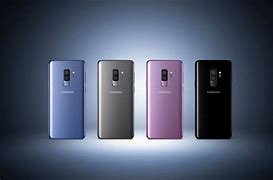

Key Features of Samsung Galaxy S9 Plus
1. Gorgeous Display
The Galaxy S9 Plus features a 6.2-inch Super AMOLED display with a Quad HD+ resolution (2960 x 1440), delivering stunning visuals. The vibrant colors, deep blacks, and sharp contrast make it perfect for streaming, gaming, and browsing. The display also comes with an 18.5:9 aspect ratio for a more immersive experience and is protected by Corning Gorilla Glass 5, ensuring durability against drops and scratches.
2. Sleek Design
The S9 Plus combines a premium glass and metal design, giving it a sleek and sophisticated look. The phone is also IP68 water and dust resistant, which means you can confidently take it near water or in dusty environments without worry. The curved edges of the screen and the glass back not only look stunning but feel great to hold in the hand.
3. Dual Rear Camera Setup
The standout feature of the S9 Plus is its dual rear camera system, which includes:
A 12MP wide-angle lens with a variable aperture (f/1.5 to f/2.4) that lets you capture amazing photos in both low-light and bright conditions.
A 12MP telephoto lens with optical image stabilization (OIS), which helps reduce blur and gives you crisp, sharp shots, even with zoom.
This dual setup allows you to take bokeh (blurred background) shots for professional-looking portraits and Super Slow-Mo video at 960 fps, so you can capture stunning high-speed moments. The rear camera can also record in 4K with HDR10+ support, making video playback more vivid and realistic.
4. Powerful Performance
Under the hood, the Galaxy S9 Plus is powered by the Qualcomm Snapdragon 845 (U.S.) or Exynos 9810 (International) processor, offering top-tier performance. With 6GB of RAM, it easily handles multitasking, gaming, and demanding apps. Plus, it comes with 64GB of internal storage, expandable up to 400GB via microSD, giving you plenty of room for your apps, photos, and videos.
5. Improved Battery Life
The Galaxy S9 Plus packs a 3500mAh battery, which is more than enough to get you through a full day of moderate usage. It also supports fast charging (both wired via USB-C and wireless charging via Qi or PMA) so you can quickly recharge when needed. Plus, with adaptive power-saving mode, the phone intelligently manages battery usage to maximize longevity.
6. Stereo Speakers & Dolby Atmos Sound
The Galaxy S9 Plus delivers an amazing audio experience with stereo speakers tuned by AKG and Dolby Atmos support. Whether you're watching videos, playing games, or listening to music, the sound is loud, clear, and rich in detail. You’ll enjoy better, more immersive sound compared to many other smartphones in this category.
7. Biometric Security
The Galaxy S9 Plus provides multiple ways to secure your device. You can use the rear-mounted fingerprint scanner (which is conveniently placed below the camera for easier access), iris scanning, or face recognition to unlock your phone. It also supports Samsung Knox security, ensuring your data stays safe from malware and hackers.
8. Fast and Efficient Connectivity
The Galaxy S9 Plus supports Gigabit LTE, ensuring fast data speeds for streaming, browsing, and downloading. With Bluetooth 5.0, you can connect multiple devices at once, enjoy improved range, and get better audio quality when using wireless headphones. It also features USB-C for fast charging and data transfer.
9. Android and Samsung Features
Running on Android 8.0 Oreo (upgradable to newer versions), the Galaxy S9 Plus comes with Samsung’s custom One UI for a smooth and user-friendly experience. It includes features like Bixby, Samsung’s AI assistant, and Samsung DeX, which allows you to use your phone as a desktop when connected to a monitor.
10. Always On Display & Customization
The Always On Display feature allows you to check the time, notifications, and calendar events without unlocking your phone. Plus, the Infinity Display makes for a seamless edge-to-edge screen, and the edge lighting option provides custom notifications along the curved edges, which makes the phone feel even more personal.
11. Headphone Jack
One of the great things about the Galaxy S9 Plus is that it still retains the 3.5mm headphone jack, so you can enjoy high-quality audio through your wired headphones without needing an adapter.
Overall, the Samsung Galaxy S9 Plus is a powerhouse with a gorgeous display, a fantastic dual-camera setup, and top-notch performance. It’s a great choice for those looking for a premium, feature-packed smartphone that still offers great value in terms of design, camera quality, and day-to-day performance. Whether you're into photography, gaming, or just need a reliable phone, the S9 Plus has something for everyone!
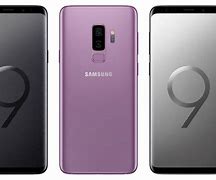

Key Features Table
for the Samsung Galaxy S9 Plus
‘’Everything You Need to Know About Its Performance & Features''
Performance Analysis
‘’Everything You Need to Know About Its Performance & Features"
The Samsung Galaxy S9 Plus, despite being released in 2018, still offers solid performance thanks to its high-end hardware. Powered by either the Exynos 9810 (global version) or Snapdragon 845 (U.S. version) chipsets, the device delivers strong, smooth performance in day-to-day tasks, with impressive processing power for browsing, media consumption, and moderate multitasking. The 6GB of RAM ensures efficient app handling, while the Adreno 630 GPU (in the Snapdragon variant) provides good graphics performance, capable of handling most mobile games and demanding apps with moderate settings. The 6.2-inch Super AMOLED display with QHD+ resolution remains one of the phone's standout features, offering vibrant colors and sharp details, making it perfect for watching videos and gaming. The device also benefits from fast UFS 2.1 storage, ensuring quick app launches and file transfers. Battery life, with a 3,500mAh capacity, is generally reliable, offering a full day of moderate use, although it may not last as long as newer smartphones with larger or more efficient batteries. However, the S9 Plus does have its weaknesses. The performance, while strong, can lag behind newer devices with more advanced processors and better energy efficiency. The 6GB of RAM is adequate for most tasks but may struggle with heavy multitasking or the latest high-demand apps. The phone’s camera, though impressive at launch, falls short compared to current flagship devices, especially in low-light performance and advanced computational photography. Furthermore, while the S9 Plus was launched with Android 8.0 Oreo, its software updates have slowed, and it no longer receives the latest versions of Android as promptly as newer models. Additionally, the lack of 5G support and the relatively small battery capacity by today's standards are drawbacks for those looking for cutting-edge features. In summary, the Galaxy S9 Plus remains a capable device with solid strengths in display quality, performance, and design, but its weaknesses lie in camera performance, battery longevity, and its relative obsolescence compared to modern smartphones.

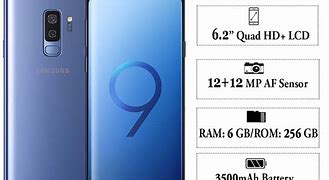
Market Positioning
The Samsung Galaxy S9 Plus was positioned as a premium flagship device when it launched in 2018, targeting users who sought top-tier performance, an excellent display, and cutting-edge features within the Android ecosystem. Positioned above mid-range smartphones, the S9 Plus competed with other high-end devices like the Apple iPhone X and Google Pixel 2 XL. One of its core strengths was its stunning 6.2-inch Super AMOLED display, offering vibrant colors, deep blacks, and a sharp QHD+ resolution that set it apart from many other devices in the same price range. The device's powerful Exynos 9810 or Snapdragon 845 processors, along with 6GB of RAM, positioned it as a strong performer in multitasking and gaming, appealing to tech enthusiasts and users who wanted both speed and power. Additionally, the S9 Plus featured a premium build with curved glass edges, stereo speakers tuned by AKG, and wireless charging, which further bolstered its high-end positioning. However, despite its strong hardware and design, the S9 Plus had certain weaknesses that eventually impacted its market position. The most significant of these was its relatively short lifespan in terms of software updates—while it launched with Android 8.0 Oreo, its updates to newer versions of Android were slower compared to its competitors, which hindered its long-term value proposition. The camera, although competent, was outclassed by rivals like the iPhone X and Google Pixel 2 in terms of low-light performance and computational photography. Battery life, while decent at launch, became less competitive as newer devices with larger, more power-efficient batteries hit the market. Additionally, by 2020 and beyond, 5G was becoming an important differentiator in the market, and the S9 Plus lacked 5G support, limiting its appeal for future-proofing. The S9 Plus's price, though competitive at launch, became a barrier to its broader adoption as newer, more feature-packed devices entered the market at similar or lower prices. Overall, while the Galaxy S9 Plus was a strong contender in the premium market upon release, its weaknesses in camera performance, battery longevity, and software updates gradually diminished its standing against newer models, making it less appealing as a long-term investment for consumers looking for the latest features.
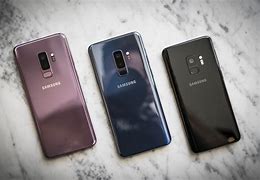

Price Range
Samsung Galaxy S9 Plus Review: Is It Still Worth Buying in 2024?
The Samsung Galaxy S9 Plus, although launched in 2018, still offers a compelling value for those seeking a high-performance smartphone at a more affordable price compared to newer flagship models. The price of the S9 Plus can vary depending on the retailer, storage capacity, and whether it's new or refurbished. On average, the price for a brand-new S9 Plus typically ranges between $250 and $400. Refurbished models, which often come with a warranty, can be found for as low as $200, making it a budget-friendly option for users who don’t mind opting for a pre-owned device. Additionally, you may find discounts or promotions, especially around sales events like Black Friday or holiday seasons, which can further lower the price. While it's no longer the latest flagship device, the S9 Plus offers excellent value for the price, especially for users who want premium features like a large, vibrant display, a solid camera system, and strong performance without paying top-tier prices for newer models.
User Experience
The user experience on the Samsung Galaxy S9 Plus is designed to offer both functionality and sophistication. With its large 6.2-inch Super AMOLED display, users can enjoy vibrant, sharp visuals, whether they’re watching videos, gaming, or browsing through content. The Infinity Display curves around the edges, providing an immersive, bezel-less experience that feels premium and fluid. The One UI interface is intuitive, making navigation simple and efficient, with features like edge panels for quick access to apps and shortcuts. The Exynos 9810 or Snapdragon 845 processors (depending on region) ensure smooth performance for everyday tasks, while the 6GB RAM handles multitasking effectively. Additionally, the dual-lens camera system captures stunning photos, especially in well-lit conditions, with features like AR Emoji and Super Slow-mo adding extra fun and creative options. The fingerprint sensor, face recognition, and iris scanner provide a variety of biometric security options, though the fingerprint sensor placement near the camera is a bit awkward. While the device offers IP68 water resistance and fast charging, the 3,500mAh battery could be better suited to the demands of the large screen. Overall, the Galaxy S9 Plus offers a high-end, feature-rich experience that stands out in its generation, with a few minor drawbacks in areas like battery life and security sensor placement.


Pros and Cons for the Samsung Galaxy S9+
Pros of Samsung Galaxy S9+
Stunning Display:
1. 6.2-inch Quad HD+ Super AMOLED display offers vibrant colors, deep blacks, and exceptional clarity. The 18.5:9 aspect ratio makes it perfect for immersive media consumption, with high contrast and excellent outdoor visibility.
2. The QHD+ resolution (1440 x 2960 pixels) ensures ultra-sharp detail, whether you're watching videos, gaming, or browsing.
Powerful Performance:
41. Powered by the Qualcomm Snapdragon 845 (in most regions) or Exynos 9810 (in others), coupled with 6GB of RAM, the S9+ delivers top-tier performance. It handles multitasking, gaming, and demanding applications effortlessly.
2. UFS 2.1 storage provides fast read/write speeds, ensuring a smooth experience with apps, games, and file transfers.
Dual-Camera System:
1. The 12MP dual rear cameras offer versatility with a variable aperture (f/1.5 to f/2.4), which adapts to lighting conditions for better low-light photography.
2. The Telephoto lens (f/2.4) allows for 2x optical zoom, enhancing photography versatility, especially for portraits or distant subjects.
3. The Super Speed Dual Pixel sensor enhances autofocus speed and accuracy, while super slow-motion video recording allows for stunning 960fps capture.
Excellent Audio:
1. Tuned by AKG, the stereo speakers deliver clear, balanced sound, providing an enhanced audio experience for music, videos, and calls.
2. The integration of Dolby Atmos support creates a surround sound effect when using headphones, enhancing media playback.
IP68 Water and Dust Resistance:
1. The S9+ comes with an IP68 rating, meaning it is waterproof up to 1.5 meters for 30 minutes and dustproof, making it highly durable for everyday use.
Fingerprint Scanner and Face Recognition:
1. In addition to the fast and accurate rear-mounted fingerprint scanner, the S9+ also features facial recognition for added security and convenience.
2. The Iris Scanner is also available for an extra layer of biometric security, which enhances the phone’s unlock methods.
Long-Lasting Battery:
1. The 3500mAh battery provides sufficient power for a full day of moderate use, and with Fast Charging and Wireless Charging support, it offers convenient and quick charging options.
2. Battery management features, such as adaptive battery and power-saving modes, extend the device's longevity, especially when used extensively throughout the day.
Expandable Storage:
1. The S9+ offers microSD support up to 400GB, allowing for plenty of storage flexibility, which is a feature many modern flagship devices have moved away from.
Premium Build Quality:
1. The glass and metal design is sleek and premium, offering a high-end look and feel. It’s also relatively compact despite the large screen size, making it easy to handle.
Samsung DeX Support:
1. Samsung’s DeX feature allows you to turn the S9+ into a desktop-like experience by connecting it to a monitor, which can be particularly useful for productivity.
Cons of Samsung Galaxy S9+
No 5G Support:
1. The Galaxy S9+ does not support 5G, which can make it less future-proof compared to more recent devices that offer 5G connectivity, especially with the growing rollout of 5G networks worldwide.
Battery Life Could Be Better:
1. While the 3500mAh battery provides decent battery life, the high-resolution display and powerful components may drain the battery more quickly than some users expect, especially with heavy use such as gaming or 4K video playback.
2. Competing devices with larger battery capacities and more efficient processors may offer longer-lasting power.
Lack of Dual SIM Support in Some Regions:
1. Although the S9+ supports dual SIM in some markets, it may not be available globally, which can be a downside for frequent travelers or users who require dual SIM functionality.
Expensive at Launch:
1. When it was released, the Galaxy S9+ was priced at a premium, making it less accessible for those on a budget.
2. Even though prices have dropped significantly since release, the S9+ is still somewhat expensive when compared to similarly specced devices from other brands.
Performance Limits in Extreme Gaming:
1. The Snapdragon 845 or Exynos 9810 chipsets, while powerful, may struggle with extremely demanding mobile games or long periods of heavy multitasking, resulting in throttling or heat generation.
2. High-end gaming smartphones from competitors, such as the Asus ROG Phone or Xiaomi Black Shark, outperform the S9+ in this area.
Bixby Assistant:
1. While Samsung’s Bixby voice assistant offers a variety of features, it is still far behind Google Assistant or Siri in terms of effectiveness and accuracy. Some users may find the Bixby button unintentionally triggering and somewhat annoying.
Fingerprint Scanner Placement:
1. Though the fingerprint scanner is fast and accurate, its placement next to the camera can be awkward for some users, making it harder to access quickly without accidentally smudging the camera lens.
Glass Back Prone to Cracking:
1. While the glass back gives the S9+ a premium feel, it can also be prone to cracking or scratching if dropped, unlike more durable materials like metal or ceramic.
No 3.5mm Headphone Jack:
1. The removal of the 3.5mm headphone jack means users must rely on Bluetooth headphones or the USB-C adapter for wired audio, which could be a dealbreaker for some audiophiles who prefer using wired headphones.
Limited Software Features Compared to Newer Devices:
1. Although the S9+ comes with One UI and great software features, newer Samsung devices have received software upgrades and additional features like under-display fingerprint sensors and enhanced camera capabilities, making the S9+ feel somewhat dated in comparison.
Conclusion : The Samsung Galaxy S9+ was an impressive flagship device when it launched, offering cutting-edge technology, a stunning display, and a versatile camera system. It still remains a strong contender for those seeking a high-quality phone at a more affordable price, especially now that it has seen price reductions. However, it does have certain drawbacks, such as the lack of 5G support, battery limitations, and the Bixby assistant. Despite these imperfections, the S9+ still holds up well as a premium mid-range device for those who prioritize display quality, camera versatility, and a smooth overall experience.

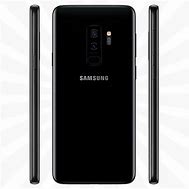
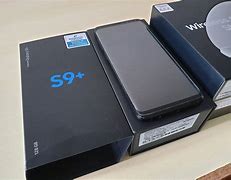

Comparative Analysis of Samsung Galaxy S9 Plus
"Samsung Galaxy S9 Plus in 2024: An In-Depth Review of Its Features, Camera, & Performance"
The Samsung Galaxy S9 Plus was released in March 2018 as a flagship device designed to compete in the premium smartphone market. It featured an impressive Super AMOLED display, a powerful camera system, and robust performance. However, with competition from major players like Apple, Google, and OnePlus, newer models have surpassed the Galaxy S9 Plus in certain areas. In this analysis, we will explore the strengths and weaknesses of the S9 Plus, key features, and compare it against its key competitors: Apple iPhone Xs Max, Google Pixel 3 XL, and OnePlus 6T.
Samsung Galaxy S9 Plus Overview
· Display: 6.2-inch Super AMOLED, 1440 x 2960 pixels, 18.5:9 ratio
· Processor: Qualcomm Snapdragon 845 (USA) / Exynos 9810 (Global)
· RAM: 6GB
· Storage: 64GB/128GB/256GB (expandable via microSD up to 400GB)
· Camera: Dual rear cameras (12MP f/1.5-2.4 + 12MP telephoto), 8MP front camera
· Battery: 3500mAh with fast and wireless charging
· Operating System: Android 8.0 Oreo, upgradable to later versions
· Other Features: IP68 water resistance, stereo speakers tuned by AKG, facial recognition, iris scanner, Bixby
Key Competitors:
1. Apple iPhone Xs Max
2. Google Pixel 3 XL
3. OnePlus 6T
Strengths of the Samsung Galaxy S9 Plus
Stunning Display:
o The 6.2-inch Super AMOLED display with a 1440 x 2960 pixel resolution offers vivid colors, deep blacks, and excellent contrast. The 18.5:9 aspect ratio is ideal for watching videos and multitasking. Additionally, it supports HDR10 for an enhanced viewing experience.
Camera Excellence:
o The Galaxy S9 Plus is known for its dual-camera setup, featuring a 12MP primary camera with a variable aperture (f/1.5 - f/2.4) that helps capture sharp photos even in low-light conditions. The secondary 12MP telephoto lens offers 2x optical zoom. The 8MP front camera provides decent selfie performance.
Performance:
o Powered by either the Qualcomm Snapdragon 845 (USA) or Exynos 9810 (global), and 6GB of RAM, the Galaxy S9 Plus provides solid performance for gaming, multitasking, and running demanding applications.
Stereo Speakers (AKG tuned):
o The stereo speakers, tuned by AKG and enhanced by Dolby Atmos, deliver clear and immersive sound. This is especially useful for media consumption like movies and music.
Premium Build and Design:
o The S9 Plus features a sleek design with Corning Gorilla Glass 5 on both the front and back, making it feel premium. It also has an IP68 rating, offering water and dust resistance.
Expandable Storage:
o One of the standout features of the Galaxy S9 Plus is its ability to support expandable storage via a microSD card (up to 400GB), offering greater flexibility for users.
Versatile Security Features:
o The S9 Plus comes with multiple security options, including iris scanning, fingerprint recognition, and facial recognition, giving users a variety of ways to secure the device.
Weaknesses of the Samsung Galaxy S9 Plus
Battery Life:
o Despite having a 3500mAh battery, the battery life was often considered average. Under heavy usage, users may find themselves needing to charge the device by the end of the day. Competing devices such as the iPhone Xs Max and OnePlus 6T offered better longevity.
Fingerprint Scanner Placement:
o The fingerprint scanner was positioned next to the rear camera, which was often awkward for users and led to smudging of the camera lens while unlocking the device.
Bixby Assistant:
o Bixby, Samsung's voice assistant, did not gain the same level of traction as Google Assistant or Siri. It was somewhat less intuitive and lacked the same level of integration across devices.
No 5G Support:
o The Galaxy S9 Plus lacked 5G support, which was emerging as a new standard for mobile networks at the time. This limited its future-proofing compared to some newer devices.
Bezels
While the S9 Plus had relatively slim bezels, the design still featured top and bottom bezels, which felt outdated compared to newer bezel-less phones like the iPhone Xs Max and OnePlus 6T.
Key Competitors: Strengths and Weaknesses
1. Apple iPhone Xs Max
Strengths:
· Display: The 6.5-inch Super Retina OLED display was vibrant and offered high color accuracy. It also supported HDR10 and Dolby Vision, providing an excellent visual experience.
· Performance: Powered by the A12 Bionic chip, the iPhone Xs Max delivered industry-leading performance, excelling in gaming, machine learning tasks, and general use.
· Camera: The dual 12MP rear cameras, enhanced by Smart HDR, produced superior photos with better dynamic range, particularly in low light.
· iOS Ecosystem: iOS provides a smooth, intuitive interface and seamless integration with other Apple devices, making it ideal for users already invested in the Apple ecosystem.
Weaknesses:
· Price: The iPhone Xs Max was one of the most expensive smartphones at the time, making it less accessible to many consumers.
· No Expandable Storage: Apple continued its tradition of not including microSD card support, limiting storage options for users who need more space.
· Battery Life: Despite a larger battery than the Galaxy S9 Plus, the iPhone Xs Max’s battery life was often comparable to the S9 Plus under real-world conditions.
2. Google Pixel 3 XL
Strengths:
· Camera Performance: The 12.2MP rear camera on the Pixel 3 XL was praised for its computational photography, offering exceptional low-light performance, vibrant colors, and impressive detail with features like Night Sight and Super Res Zoom.
· Software: The pure Android experience with guaranteed updates from Google ensured fast security patches and new features.
· Google Assistant: The Pixel 3 XL featured the best voice assistant on the market, with superior integration into Google’s ecosystem and applications.
Weaknesses:
· Display Design: The 6.3-inch OLED display had a large notch, which many users found intrusive compared to the notch-free designs of the S9 Plus and iPhone Xs Max.
· Battery Life: The 3430mAh battery was relatively smaller than competitors and often didn’t last as long under heavy usage.
· No Expandable Storage: The Pixel 3 XL did not offer microSD card support, which limited storage options.
3. OnePlus 6T
Strengths:
· Performance: The Snapdragon 845 processor, coupled with 6GB/8GB of RAM, delivered flagship performance at a much lower price point compared to the Galaxy S9 Plus and iPhone Xs Max.
· Battery Life: The 3700mAh battery in the OnePlus 6T offered better endurance than the S9 Plus, often lasting a full day with moderate to heavy usage.
· Value for Money: The OnePlus 6T delivered flagship-level performance and features at a significantly lower price, making it an excellent value proposition.
Weaknesses:
· Camera Quality: While the 16MP + 20MP dual-camera system was competent, it could not compete with the camera capabilities of the Galaxy S9 Plus or Pixel 3 XL, especially in low-light conditions.
· No Wireless Charging or IP Rating: The OnePlus 6T did not support wireless charging or offer an official IP rating for water resistance, features that were available on the S9 Plus and iPhone Xs Max.
· Software Updates: OnePlus was relatively slower in providing long-term software updates compared to Google and Apple.

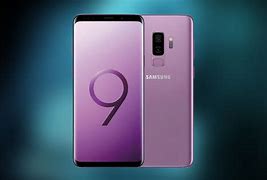
Features Comparison Table
Samsung Galaxy S9 Plus vs Competitors:
A Deep Dive into Its Pros, Cons, and Pricing in 2024


Evolution from Previous Models
The Samsung Galaxy S9 Plus marked a significant evolution from its predecessor, the Galaxy S8 Plus, refining the formula with meaningful upgrades that enhanced both performance and user experience. One of the most substantial advancements was the introduction of a variable aperture camera system on the 12MP rear lens. This allowed the S9 Plus to dynamically adjust the aperture between f/1.5 and f/2.4, improving low-light performance and delivering superior image quality in varied lighting conditions—something the S8 Plus couldn’t quite match. In terms of design, the S9 Plus retained the signature curved glass and metal construction but refined the ergonomics, particularly with a more convenient repositioning of the fingerprint sensor below the camera, addressing user feedback from the previous model.
Internally, the S9 Plus powered a leap forward in processing power with the Qualcomm Snapdragon 845 (or Exynos 9810 in some regions), offering faster CPU performance, improved GPU capabilities, and better energy efficiency, ensuring the device could handle more demanding apps and tasks with ease. The inclusion of stereo speakers, tuned by AKG, further elevated the multimedia experience, providing richer, more immersive sound—another area where the S9 Plus outshone the S8 Plus. Samsung also improved software features, enhancing the user interface and expanding capabilities like AR Emojis and facial recognition, reflecting the brand's investment in augmented reality and personalized experiences. Despite maintaining the same stunning 6.2-inch Super AMOLED display from the S8 Plus, the S9 Plus built upon it with refinements in brightness and color accuracy, making it even more vibrant and visually appealing. Overall, the S9 Plus built on the strong foundation of the S8 Plus, delivering targeted upgrades in camera technology, performance, sound quality, and software, making it a more polished and capable device for users looking for a cutting-edge smartphone experience.
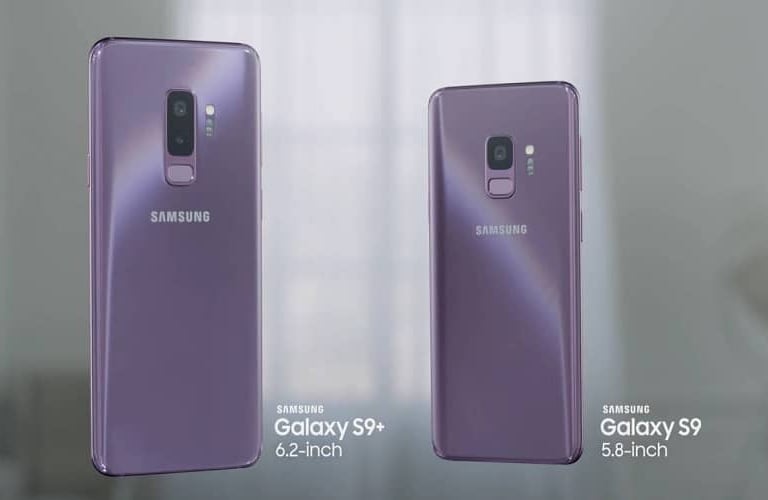

Impact on the 5G Market
The introduction of 5G technology has had a significant impact on the smartphone market, especially for older models like the Samsung Galaxy S9 Plus. While the S9 Plus itself does not support 5G, its presence in the market serves as a reminder of the rapid evolution in mobile connectivity. Consumers who are considering upgrading from the S9 Plus to a newer device with 5G capabilities will find the benefits of faster download speeds, improved network reliability, and enhanced user experiences. 5G connectivity also enables smoother streaming, faster gaming, and quicker access to cloud services. Although the S9 Plus remains a solid phone with its powerful features and performance, the push toward 5G has influenced users' decision-making when it comes to choosing their next device. This shift highlights how essential 5G compatibility has become for staying future-proof in the world of smartphones. As Samsung continues to release 5G-enabled devices, the transition for users will likely be seamless, ensuring that they can enjoy all the perks of the next-gen network without missing out.


Key Decision-Making Factors
When considering the Samsung Galaxy S9 Plus, there are a few key decision-making factors to keep in mind. First, the phone's stunning 6.2-inch Super AMOLED display delivers vibrant colors and deep contrasts, making it perfect for media consumption and gaming. Another highlight is the powerful camera setup, with its dual-lens system that captures crisp, detailed photos even in low light. The S9 Plus also offers excellent performance, thanks to its fast processor and ample RAM, making multitasking and gaming smooth. Plus, its sleek, premium design and IP68 water resistance ensure durability and a touch of luxury. Lastly, if battery life is a priority, the S9 Plus can easily last through a full day of use, thanks to its 3,500mAh battery. These features make the S9 Plus a strong contender for anyone seeking a premium smartphone experience.




Conclusion
In conclusion, the Samsung Galaxy S9 Plus remains a formidable contender in the high-end smartphone market, offering a balanced combination of premium design, exceptional performance, and powerful features. While it is no longer the most cutting-edge device, it still impresses with its stunning 6.2-inch Quad HD+ Super AMOLED display, which continues to deliver vibrant colors and deep contrast, making it ideal for media consumption and gaming. The flagship-level camera system, with its dual 12MP sensors, captures sharp and dynamic images, solidifying the S9 Plus as one of the top camera phones in its class, despite the emergence of more advanced systems in newer models. Performance-wise, the Snapdragon 845 processor and 6GB of RAM ensure smooth multitasking, gaming, and general day-to-day use, with only minor shortcomings in comparison to newer flagships, particularly in areas like 5G connectivity and extreme power efficiency.
However, the S9 Plus does face some challenges when placed alongside its newer competitors. Devices like the Samsung Galaxy S20 and iPhone 11 offer faster processors, more refined software, and advanced features like 5G support, faster charging, and improved durability. Despite this, the S9 Plus still holds its ground in terms of overall user experience, with its streamlined One UI interface, reliable performance, and solid build quality. Its pricing, while higher than mid-range alternatives, presents strong value for those who don’t necessarily need the latest tech but still want a flagship experience.
When evaluating its strengths and weaknesses, the S9 Plus shines with its elegant design, impressive screen, and camera versatility. On the flip side, its aging battery life and lack of some modern features—such as wireless charging advancements and an in-display fingerprint sensor—might make it feel less future-proof. For users looking for the latest technological advancements, the S9 Plus may not be the ideal choice, but for those seeking a well-rounded device that delivers a premium experience without breaking the bank, it remains a worthy option. Ultimately, the decision hinges on how much weight you place on cutting-edge technology versus a well-established, reliable flagship that still delivers on core smartphone essentials.
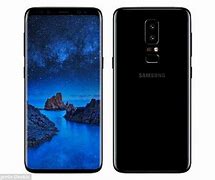

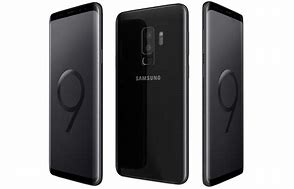



In-depth analysis of products across categories.
Contact us info@bestinclassreview.com
© 2024. All rights reserved.
Subscribe for Latest Tech
Article News & Reviews
📬 Stay Ahead with the Latest Tech Article News & Reviews!
If you found this review helpful and want to stay informed about the latest features, security updates, tech article news, and smart insights, don’t miss out on what’s coming next.
👉 Subscribe now to get fresh reviews, breaking tech news, in-depth tech articles, and expert analysis delivered straight to your inbox.
Be the first to know—because staying informed means staying secure.
🔔 Subscribe Here
Your smarter tech journey starts today!
